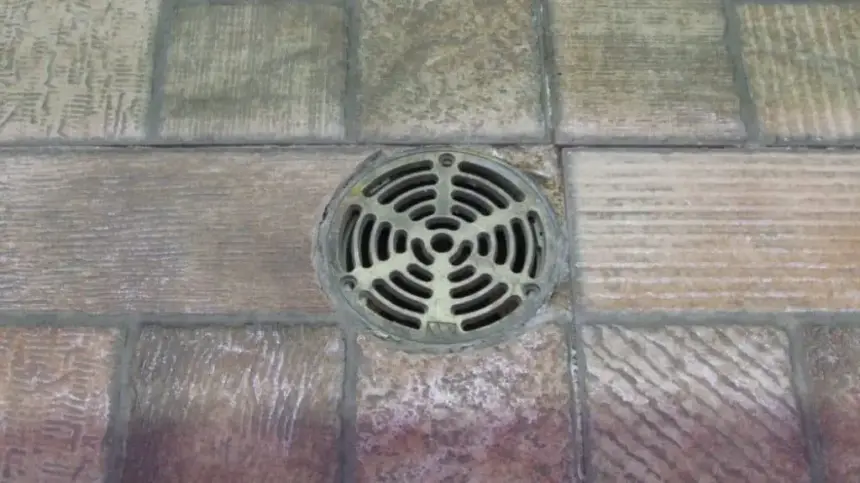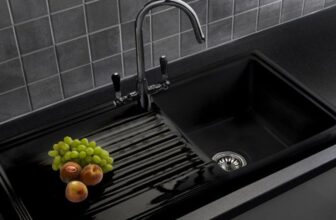Floor Sink VS Floor Drain – What’s The Difference?
When designing a new bathroom or renovating an old one, most homeowners tend to pay the most attention to toilets, bathtubs, or washbasins.
Rarely do people give much thought to floor sinks or floor drains.
Even though every house has them, as they’re mostly out of sight, they often get ignored.
The truth is that they don’t require much of our attention, but are still essential for keeping your house clean, and healthy, and preventing potential damage.
When making plans for their bathrooms, basements, or kitchens, homeowners sometimes get confused when deciding on floor sink vs floor drains.
A lot of people don’t quite understand what each of them does, what they even look like, or if they need both of them. To clear some of the confusion,
I’ll explain what floor sinks and drains are, what they’re used for, and analyze the key differences between the two.
| Floor Sink | Floor Drain | |
| Purpose | Designed for washing and rinsing in commercial and industrial settings | Designed for draining wastewater and preventing water accumulation in residential and commercial settings |
| Installation | Typically installed in a floor-mounted fashion, and connected to plumbing and drainage systems | Installed flush with the floor surface, and connected to drainage systems to allow water to flow directly into pipes |
| Design | Features a basin that sits atop the floor and is generally deeper than a standard sink | Consists of a grated or perforated cover that is placed on top of a drain pipe or collection chamber embedded within the floor |
| Usage | Ideal for cleaning large items, food preparation, or as an alternative to a utility sink | Typically used in kitchens, laundry rooms, and basements to prevent water accumulation and facilitate easy drainage |
What Is A Floor Sink?
A floor sink is a plumbing fixture designed with the purpose of collecting, containing, and draining liquid waste.
It’s a part of the waste system but acts as an indirect drain.
A floor sink is commonly used in commercial objects, such as restaurants, and is usually situated near the fryers, dishwashers, and similar equipment.
As its name says, a floor sink is placed on the floor with the function of allowing the water to drain but also preventing debris and other solid materials from entering the plumbing system.
In most cases, floor sinks have the shape of a square basin and are deeper than the regular floor drains.
Commonly, they’re either epoxy coated or made from stainless steel, enameled cast iron, or PVC.
Depending on the indirect pipes it’s connected to, it may have full, partial, or no grate at all and is installed flush with the surrounding floor.
What Is A Floor Drain?

Unlike a floor sink, a floor drain acts as a direct train. Its main purpose is to collect and drain whatever water ends on the floor.
To have the water flowing towards the drain, it’s placed on the lowest point of the slightly sloped floor.
Floor drains are commonly found on the floors of bathrooms, shower cabins, and basements.
They drop the water from the floor into the sewer system along with the other liquid waste from other drains in the house.
The floor drains are commonly round, but can occasionally be rectangular or square.
They’re covered with plastic or metal grating whose role is to filter out any large debris in the water and stop it from reaching the drain.
Floor drains are also equipped with a trap which is actually the pipe that holds water to stop the emission of foul odors and gases from the sewer system.
Floor Sink VS Floor Drain – What’s The Difference?
Both floor sink and floor drains collect liquid waste and convey them to the sewer system.
However, they’re designed differently and operate in a slightly different way. The floor sink is larger, deeper, and as its name says has a sink-like shape.
So, instead of just a hole in the floor, they’re a basin installed on the floor. Most floor sinks are 12 x 12 inches.
Unlike floor sinks that are commonly square, floor drains are, in most cases round and much smaller, with a diameter of 2 – 12 inches, but most frequently around 4 inches.
Besides design, the other major difference between the two is their intended purpose.
Floor sinks usually serve as indirect drainage for various appliances found in kitchens or commercial facilities, such as fryers, ice machines, or dishwashers.
The floor drain, on the other hand, directly collects the water from the surface of the floor.
Maintenance Of Floor Sinks And Floor Drains
In order to keep your house, especially the bathroom and kitchen, clean and sanitary, floor sinks and drains must be regularly maintained.
Dirty water will not only stain the floor but also create an unhealthy living environment.
The worst scenario is to have your sink or drain clogged as it may cause the flooding of the room floor with liquid waste.
While they’re commonly protected with grating, some debris such as dog hair or dust will still find its way to the drainage system.
As soon as you notice that draining has slowed down, you should check the sink or drain for clogging.
If you react on time, you’ll likely be able to solve the issue with a few pumps with a plunger. Alternatively, you can pour baking soda/vinegar solution down the drain or sink.
The best way to prevent clogging is to regularly check and clean these plumbing fixtures.
Do You Need Both The Floor Sink And The Floor Drain?
Even though they have different primary purposes and different ways of functioning, both floor sinks, and floor drains are extremely useful when it comes to keeping your house sanitary and clean.
If possible, it’s best to have both installed.
Floor drains are mostly installed in bathrooms, so they can collect any extra water from the floor and prevent eventual damage from overspills coming from the bathtub or toilet.
Floor sinks are more used for handling tougher liquid waste such as greasy and filthy water coming from the fryers and act better as waste disposal units.
So if you spend a lot of time in the kitchen and frequently use the fryer, dishwasher, or similar appliances, it would be a good idea to also have a floor sink in your house.
Conclusion
Unlike most of the other sanitaryware, floor drains and sinks are rarely in frequent use.
However, they play a crucial role in the case your toilet or bathtub overflows as they can save your floor and the whole house from any water-related damage.
When needed, they are your best chance to spare yourself from floor-repairing expenses.
This is the case both in houses and when this sanitaryware is used for non-residential purposes.
In addition, having both a floor sink and floor drain in your house will help you control the liquid waste and keep your living space healthy, disease-free, and without any unpleasant odors.



















































































